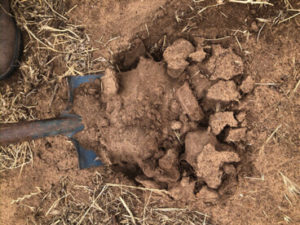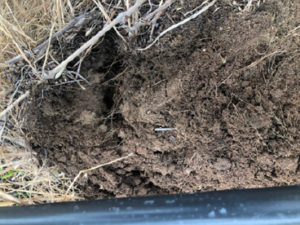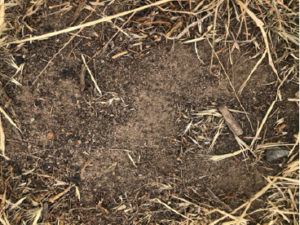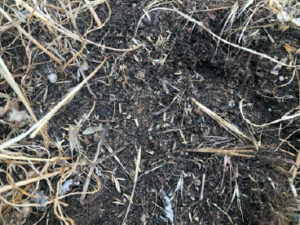After a challenging finish to 2024–25 under El Niño and an unusually prolonged summer, meaningful rainfall didn’t arrive until June. While the recent downpour has brought welcome relief—recharging tanks and topping up soil moisture—it hasn’t erased the pressures from earlier in the year.
According to the World Meteorological Organization (WMO) and the Bureau of Meteorology (BoM), we’ve now moved into a neutral El Niño Southern Oscillation (ENSO) phase. There’s a 30–35% chance of La Niña forming later this year, but for now, there’s no strong signal toward a wetter or drier season. The Indian Ocean Dipole also remains neutral, meaning we’re not receiving the additional moisture often linked to its negative phase.
Many growers hoped for a break around Anzac Day that never arrived. That delay pushed seeding later and limited early-season ground preparation. The dry start also coincided with a key phase in vine physiology. Vines shift carbohydrates from leaves and canes into root systems to support winter dormancy – in stressed vines, this process may not work effectively.
As a result, growers could see uneven budburst or weaker canopies this spring. These conditions followed a high-stress end to the last growing season. Growers can expect variability across blocks—especially near headlands, trees, and lighter soils. This variation affects spray timing, nutrition decisions, and labour planning.
The dry finish to the 2024–25 season pushed many growers in the Adelaide Hills and Fleurieu Peninsula to the brink of water availability. Tanks and dams ran dry, carting services were stretched thin, and some properties experienced delivery delays of up to eight weeks. These challenges highlight the necessity for proactive water management.
Assessing and enhancing water infrastructure, such as increasing storage capacity and improving irrigation efficiency, are crucial steps to mitigate the risks of future shortages. Additionally, exploring alternative land uses for underperforming blocks, like converting to Super High-Density (SHD) olive production, can offer more sustainable and water-efficient options.
With the season likely to move quickly once conditions warm, winter remains a key period for getting ahead. Prioritise pruning, trellis repairs, vine training, and irrigation maintenance. In young or recently replanted blocks, this is also an ideal time to revisit training structure, reapply mulch, and shore up soil health with compost or nutrition programs.
Soil testing now can guide early-season fertiliser decisions and help balance nutrient availability before budburst. Laying this groundwork over winter ensures the vineyard is set up to respond efficiently when the growing season kicks off.
With no strong seasonal signal, adaptability will be key. Many growers are investing in efficient battery-powered tools like Felco and Pellenc to reduce reliance on fuel and increas labour efficiency. Others are taking a close look at vineyard performance across the board—making practical decisions about where to concentrate resources and where changes might be due. For vineyards under pressure, small shifts in winter planning can have a big impact in spring.
We may be in a neutral ENSO phase, but the memories of last season are still fresh. While we can’t control the weather, we can control how well prepared we are for whatever comes next.
If you’d like support reviewing your winter–spring strategy—from labour planning to irrigation or block conversion—get in touch.
Book a site visit or give us a call to discuss your seasonal priorities.
But for our team, this is one of the most important seasons of the year. While the vines recharge, we get to work behind the scenes, laying the groundwork for a strong and sustainable growing season ahead.
Much of the work we do in winter is about renewal — not just for the vines, but for the soil, the infrastructure, and the broader vineyard system. This is the season where thoughtful investment in maintenance, soil health and planning quietly shapes the quality of the fruit we’ll harvest months from now.
Winter pruning is the cornerstone of a healthy, balanced crop. It sets the tone for the entire season, influencing how much fruit each vine will carry, how well the canopy will grow, and how air and light will move through the block. Pruning also helps us manage disease risk and vine vigour. Each block within a vineyard has its own unique character, so we take the time to consider site history, block performance and seasonal trends before making the first cut.
While our pruning crews are in the vineyard, it’s also a chance to assess and maintain infrastructure. Posts that have shifted or snapped over the season are removed and replaced, reinforcing the backbone of the trellis system. At the same time, we move and retention the wires — often a subtle task, but one that pays off in spring when young shoots need support. These quiet fixes may seem small, but they make a big difference during budburst, canopy management and harvest.
Once pruning is underway, attention turns to the soil. At Pridham Viticulture, we take a regenerative approach — building healthy soils that retain water, cycle nutrients, and support biodiversity. Over winter, we spread organic-based fertilisers tailored to the needs of each block, replenishing what the vines have used over the previous season. Mulching plays a key role too, helping retain moisture, suppress weeds, and create a protective buffer for soil life.
In suitable areas, we also plant cover crops — carefully selected mixes of legumes, cereals, and grasses. These plants are more than just green groundcover; they actively work to improve soil structure, fix nitrogen, and prevent erosion. Once established, cover crops create a living link between seasons, adding organic matter and strengthening the root zone.
All of this work supports our long-term goal: vineyards that are not only productive but ecologically resilient.
With the vines at rest, winter provides a window to make larger infrastructure changes without disrupting vineyard operations. We often use this time to assess and repair irrigation systems, replacing lines, flushing out emitters, or redesigning layouts to improve water use efficiency. These works are easier to complete now than in the middle of summer when every drop counts.
In recent years, more of our clients have chosen to make broader vineyard upgrades during this window — whether that’s reworking a block layout, converting to new trellis configurations, or trialling new varieties. Winter gives us the breathing space to approach these projects properly, without interfering with the growing season.
Winter weeds can gain a foothold quickly if left unchecked. We aim to manage them early using a mix of mechanical control and targeted spraying, depending on site conditions and client preference. Mechanical weeding helps reduce herbicide reliance and keeps soil biology more intact, especially important when working toward a more regenerative system. Keeping weeds down in winter also reduces pressure in spring, saving time and input costs later on.
No two winters are exactly the same, but the core of our approach stays consistent. We use this season to invest in vineyard health, build stronger systems, and make careful choices that support both productivity and sustainability.
Every post replaced, every wire tensioned, every handful of mulch or seed sown is part of a broader commitment to farming in a way that cares for the land. Winter work might not be the most visible part of the season, but it’s the foundation everything else is built on. All of this winter vineyard work adds up to healthier vines, better fruit, and a system that can adapt to whatever the season brings. Our approach is grounded in regenerative principles and aligned with national frameworks like Sustainable Winegrowing Australia.
If you’re looking ahead to winter works in your own vineyard, or simply curious about how we support vine health year-round, we’d love to have a conversation.
South Australia has a long tradition of fruit growing, with McLaren Vale recognised not only for its wines, but historically for its orchards of apples, pears, cherries, and stone fruit. In the early 1900s, mixed farms and small-scale fruit blocks dotted the region, supplying local markets and supplementing income from grape growing. Over time, the pressure from urban expansion, shifting commodity prices, and water limitations pushed many orchardists to pivot or consolidate. By the early 2000s, vineyards had become dominant—but the story of fruit growing in the region was far from over.
In the past decade, a quiet resurgence in high-value orchard crops has taken root across the Vale and surrounding areas. With rising demand for premium cherries, niche apples, and pome fruits for local and export markets, growers have begun to reinvest in orchard infrastructure. This modern wave of orchard management, however, faces vastly different challenges to those of past generations.
One of the most pressing is climate volatility. Data from the Bureau of Meteorology (2024) shows an upward trend in summer maximum temperatures, with McLaren Vale now experiencing over 30 days above 30°C each year on average. Heat stress, sunburn, and storm damage are not just seasonal threats; they are ongoing operational risks. Similarly, bird pressure has intensified, with native and introduced species adapting rapidly to food availability, particularly in rural-urban fringe agricultural zones.
To manage these challenges, growers have looked to permanent netting structures—not as a seasonal fix, but as critical infrastructure. Reflections shared by APAL (2019) highlight that orchards under netting in the Adelaide Hills recorded a 40% lift in marketable yield and up to a 75% reduction in sunburn-related downgrades. These figures are echoed by several McLaren Vale growers trialling netting across cherry and pome fruit blocks. In addition to quality improvements, netting has enabled improved labour efficiency, extended harvest windows, and better working conditions.
Unlike temporary netting, which can be labour-intensive and vulnerable to weather events, structural netting systems are engineered to withstand South Australia’s variable conditions. This includes integrated tensioning systems, anchor foundations, and designs that factor in airflow and pollination access.
While no longer supported by state grant programs as of 2024, the shift toward permanent netting continues to gain momentum. For many orchardists, it’s about futureproofing—ensuring that fruit growing remains viable in a region known for both its heritage and its adaptability.
As the landscape of McLaren Vale continues to evolve, structural netting represents more than just crop protection. It’s a commitment to resilience, quality, and the continued story of fruit growing in one of South Australia’s most dynamic agricultural regions.
Contact Us
Want to learn more about structural netting options for your orchard? Contact our team for a tailored consultation.
We have discussed this extensively amongst ourselves and with our clients and continue to evolve our thoughts collectively. It means different things to different people but most of us agree we can’t keep farming the way we do as it degrades the very landscape we live from and in.
There are many existing technologies and methods that can be used in different ways and with better timing as well as new techniques to regenerate our soils.
McLaren vale is part of a global farming community network. Many of us have travelled and conversed with farmers in many other countries. We have the WEB to remain in contact and further evolve our relationships globally. Good ecological ideas can spread fast if we want them to.
We are in the age of sharing ideas, knowledge and experience which has been for so long locked up in organisations at a considerable cost. We now have the ability to mobilise change at a far greater pace than ever before, so let’s use it to repair and regenerate our soils for a resilient future.
Our first step -understanding what affect our farming activities have on the ecology of the soil.
Don’t be fooled, bare soil is not good for the water cycle in our farming systems. We talk about soil water retention, but it cannot be done without healthy plant growth. Plants create a carbon/humu
s sponge that is the most superior method at retaining water thus fuelling soil biology and nutrient recycling, plant growth and vine health.
The photos below show how well ground cover works after rain.





Climate change is real and more people now agree than dis-agree that we need to take proper action.
In the vineyard this means reducing our carbon footprint, increasing carbon in our soils (sequestering) and removing chemical herbicides from our systems.
We now have the means with 2nd generation mechanical weed control tools and the knowledge on how to use them effectively while respecting our fragile soils.
Pridham Viticulture now operates two completely new pasture management machines.
Get in contact to discuss how they operate and could be used in your vineyard.